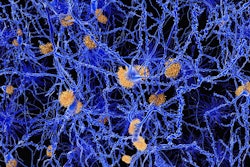Dear AuntMinnie Member,
SPECT/CT with a technetium-99m sestamibi radiopharmaceutical could be a good tool for identifying renal cell carcinoma when CT or MRI is inconclusive.
That's according to researchers from Johns Hopkins University, who tested sestamibi SPECT/CT in a study we're featuring in our Molecular Imaging Community. While sestamibi is used most often for cardiac studies, the group found that the radiotracer could also be used to identify oncocyte tumors, benign lesions that often mimic malignant disease on MRI, CT, and ultrasound scans.
Using SPECT/CT with sestamibi to characterize lesions could help avoid unnecessary biopsies or radical nephrectomy, the researchers believe. Learn more by clicking here, or visit the community at molecular.auntminnie.com.
AI for tuberculosis
Many radiologists in developed countries are worried about how artificial intelligence (AI) will affect their jobs. But in areas of the world that suffer from radiologist shortages, AI technology is seen as a potential solution to improve access to quality healthcare.
Researchers from Thomas Jefferson University wanted to see how well a pair of AI algorithms performed in analyzing x-ray studies for signs of tuberculosis, which is common in developing countries. Their idea was that perhaps two algorithms might work better than one. Find out what they discovered by clicking here.
Retirement for radiologists
Are you thinking about retiring, but want to step away from the rat race in a way that's minimally disruptive to your radiology practice? If so, then check out this article on how you can ease your way into retirement in a way that benefits both your personal life and your colleagues.




















